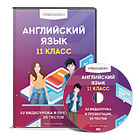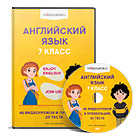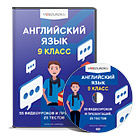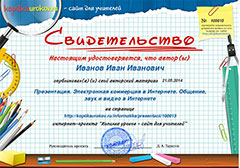Цели и задачи:
Образовательная – совершенствование коммуникативных навыков учащихся.
Развивающая – расширение кругозора учащихся, развитие памяти, мышления, речи, внимания, самовыражения учащихся, развитие творческого потенциала личности, развитие умения работать в группах.
Воспитательная – -приобщение детей к общечеловеческим ценностям,
воспитание чувства любви к народным традициям, формирование уважительного отношения к традициям и культуре других стран, -развитие мотивации к дальнейшему овладению иностранным языком
.
Средства ИКТ и интерактивного оборудования: компьютер, мультимедийный проектор.
.
Технологии:
- Проектная
- Игровая.
- Презентация в PowerPoint.
- Здоровьесберегающая
- Педагогика сотрудничества
Содержание
1.Введение в сюжет.
2.Презентация проектов с показом презентации.
- Рефлексия.
Свои проекты представляют 2команды. Одна команда готовила проект «Британские традиции, праздники, обычаи»,вторая- « Русские традиции, праздники, обычаи». Презентация проходит как общешкольное мероприятие в рамках недели английского языка.
Вступительное слово учителя: Dear friends, we are glad to see you at the presentation of the project “British and Russian Traditions, Customs, Festivals”. The students of the 8-th form will present their creative work. I hope you’ll enjoy their projects and estimate them properly.
Now let’s see which team will start the presentation. Chose your card. (Представители команд вытаскивают билеты).
Первый проект-“British Traditions, Customs, Festivals”.
Учащиеся вывешивают наглядный материал: название своего проекта, квиз, постер с шотландскими новогодними угощениями, циферблат, мультимедийный проектор.
Ведущий1: We are going to tell you about some British holidays and traditions. I think you know that Britain is a country of a great number of celebrations, traditions and customs. But there are only 6 public holidays a year in Britain, these are days on which people don’t go to work. They are: Christmas Day, Boxing Day, Good Friday, Easter, Spring Bank Holiday and Late Summer Bank Holiday. In Scotland the New Year is also a public holiday.
Ведущий 2: Besides holidays, there are other festivals, anniversaries and simply days, for example,Pancake day and Bonfire Night on which certain traditions are observed.
Pupil 1: London has observed its old ceremonies and traditions.
They are:
Changing the Guard
Mounting the Guard
The Ceremony of the Keys
Trooping the Colour
Swan – Upping
The Lord Mayor’s Show
(слайды проецируются на экран)
Pupil 2: One of the most impressive and popular displays of royal pagantry is Changing the Guard, which takes place at Buckingham Palace every day at 11.30 (слайд 1)
Pupil3 : The colourful spectacle of Mounting the Guard at the Horse Guards in Whitehall always attracts London visitors. It can be seen at 11a.m. every day and at 10 a.m. on Sundays (слайд 2)
Pupil 4; On the river Thames there are hundreds of swans. Some of them belong to the Queen. In July the Queen’s swan keeper goes up the river in a boat to mark the royal swans. This custom is called swan upping. There is a beautiful legend about the history of this custom. Listen to it. (слайд3)
Pupil 5: Рассказывает легенду на русском языке.
Ведущий 1: Now we want to offer you the quiz “Do you know British holidays?” Look at this poster and guess the holidays.
На плакате написаны названия праздников, нарисованы предметы, их символизирующие и виды деятельности.
Quiz (Matching) “British Holidays and Celebrations”
1. Christmas Day-December 25.
2 New Year Day- January 1.
3. St. Valentine’s Day-February 14.
4. Easter.
5.Halloween -October 31.
6. Bonfire Night-November 5.
7. Mother’s Day- the fourth Sunday of March.
8. May Queen Festival-the second Saturday in May.
On that day people…
A… give gifts to their relatives and friends
B…May queens present their colourful spectacle
C… set off fireworks
D…dye eggs and present their relatives with them
E…make Jack o’lantern
F… write and send postcards
G…visit their mothers and give them flowers and small presents
H…wait for the First Footer
Символы праздников нарисованы рядом с названиями: валентинка, яйцо, маска из тыквы, цветы, хлопушки, пуговицы, кусок угля.
Ведущие говорят, что люди делают в этот день, присутствующие угадывают, какой это праздник.
Ведущий 2: In England the New Year is not widely celebrated.But in Scotland it is a great festival. The preparations start with a “spring-cleaning”. No routine work may be left unfinished, all bills are paid, books returned.
Pupil6: Most important of all there must be a lot of things to eat – plum puddings and currant buns, spices and cordinals, apples and lemons, tangerines and toffee, bottles of wine and whisky.
(Ученик показывает перечисленную еду на постере).
Ведущий: Now we want to perform how a Scottish family celebrates the New Year. Many families prefer to bring in their holiday at home with music, dancing, cards and talks. In the evening they burn fire. The brighter the fire, the better the luck. Ребята декорируют сцену под гостиную. У макета камина стоит стол с украшенной елкой, свечой, едой, фруктами. В камине горит огонь. Семья сидит за столом, разговаривая, играют в карты. Звучит запись песни “My Bonnie”.Когда часы начинают отбивать 12 ударов, глава семьи идет к двери, широко открывает ее со словами :” The Old Year Out! The New Year in!”-держит ее открытой, пока не пробьет последний удар. Члены семьи и гости поздравляют друг друга: “A Happy New YEAR. Thank you. The same to you.” “You good health!” The First- Footer «звонит» в колокольчик на двери. Это ученик,одетый в шотландский костюм. Одна из девочек открывает дверь. The First- Footer целует ее в щеку. Ведущий комментирует: the First-Footer has the right to kiss the girl who answer the door.
The First Footer :“A Happy New Year. God save you! Be healthy and wealthy! I have some presents for you. Here is a piece of coal. Your family will be warm. And here is a little money and some bread. You’ll have food and money all the year. Со словами “Let this fire be long!” он бросает уголь в огонь.
- Все берутся за руки и поют “Auld Lang Syne”
- (Ученики исполняют песню стоя, взявшись за руки)
- Should auld acquaintance be forgot
- And never brought to mind?
- Should auld acquaintance be forgot,
- And days of auld lang syne!
- For auld lang syne, my dear,
- For auld lang syne,
- We’ll tak a cup o’ kindness yet
- For auld lang syne.
2. The presentation of the second project “Russian Winter Festivals”
Ведущий1: Dear friends, I’m sure you know that Russia is rich in old festivals and traditions. Especially there are many festivals in winter. People enjoy celebrating though it’s cold, frosty and snowy.
Ведущий2: In winter people celebrate New Year’s Eve, New Year Day, Christmas, Epiphany, Shrovetide. People like to have carnivals, make snowmen, play snowballs, ride a troika, climb a pole for a gift, tell fortunes, wear funny costumes and sing carols during these festivals.
Pupil1: Singing songs is an old tradition. Songs about winter are very popular. We want you to listen to one of them and give the main idea of it in short.
Ребята прослушивают русскую народную песню «Ах, ты, зимушка-зима» и говорят по- английски о чем эта песня.
Pupil2; There are many fairy-tails where Winter, Grandfather Frost, Snow Maiden are the main characters. (показывает слайды с их изображением)
What fairy-tails do you know? Name them in English. Гости называют сказки (“Frost Red Nose”, “Maiden”, “Twelve Months”, “Morozkho”, “Winter in Prostokvashino”…)
Pupil3: There are a lot of riddles devoted to winter. Now guess some of them. 1.What year lasts only one day?
(the New Year)
2.He comes at night
(or so they say)
Then does his job
And goes away
(Father Frost)
3.In winter and in summer they stand both in one coat.
(a fir – tree and a pine)
4. What man cannot live inside the house?
( A snowman)
Pupil 4: We interviewed 22people on the question “ What is your favourite winter holiday?” The results of the poll show that most people of our village think that the greatest holiday is Shrovetide.
Ведущий: And now we want to show you how Russian people celebrated Shrovetide many years ago.
Pupil5 (в костюме скомороха) ;Dear friends, you are welcome to our festival! Let’s welcome Spring together and say “goodbye “ to Winter. Have fun together with us! Since early time Shrovetide was the funniest and longest holiday. It lasted the whole week. And every day of the week had its name.
Pupil6: The first day was called “Meeting”. On that day all people went to street to meet Maslenitsa (Shrovetide).
Pupil 7; Tuesday was called “zaigrysh” People made stuffed Shrovetide, decorated homes, tobogganed along streets. ).
Pupil 8: People called Wednesday a “Sweet tooth”.They treated each other with blini, organized competitions and of course, tobogganed Shrovetide.
На сцене появляется группа ребят.На расписных санях из картона они вывозят чучело Масленицы и поют :
Дорогая наша Масленица,
Ты, Авдотьюшка Изотьевна!
Дуня белая, румяная!
Голова твоя под полозом.
Ты на чем же к нам приехала?
Pupil 9: Thursday was called “rusgulyai”.On that day people danced, sang songs and chastushki, organized round dances, played games, met people wearing fancy costumes(“ryazhenye”), ate blini.
Pupil: On Thursday people went to fairs to see jesters with rattles, bells, balalaikas. Let’s welcome merry jesters.
Выходят 2 скомороха в костюмах:
Мы пришли к вам оба :Фома да Ерема!
Низко поклонились, колпаки свалились!
В барабан ударили, с праздником поздравили.
Разговор кончаем, песню начинаем.
Под песню «Ах вы, сени, мои сени» девочки в русских национальных костюмах исполняют кадрильную пляску.
Pupil: Friday-winter sittings or mother-in-law’s vechorki. People visited each other, drank tea, played games.
Команды мальчиков и девочек показывают русскую игру «Бояре, а мы к вам пришли».
Pupil: Saturday was called Wide Shrovetide with blini, games, round dances, songs.
Pupil; The last day Forgiving Sunday. On that day people asked their forgiveness. In the evening they went to a hill behind the village and burnt the stuffed Shrovetide –a symbol of cold and darkness, waiting with hope for good spring. Дети, двигаясь по кругу, поют песню:
Ты прощай, прощай, наша Масленица,
Ты прощай, прощай, наша широкая…
Затем они подносят к макету костра чучело Масленицы и символически сжигают его.
- Reflection
- Could you please share your opinions about this kind of activity: if it was difficult, interesting, boring.
- Were the themes of the projects interesting for you?
- Would you like to try yourself again in writing projects?
Thank you for your work. I appreciate it.
Dear guests, what are your impressions about the projects?
I’m sure you’ve enjoyed them.
Which project is the best one? Why?
Now we know some celebrations in Russia and Britain.
What is different and common in both cultures?















